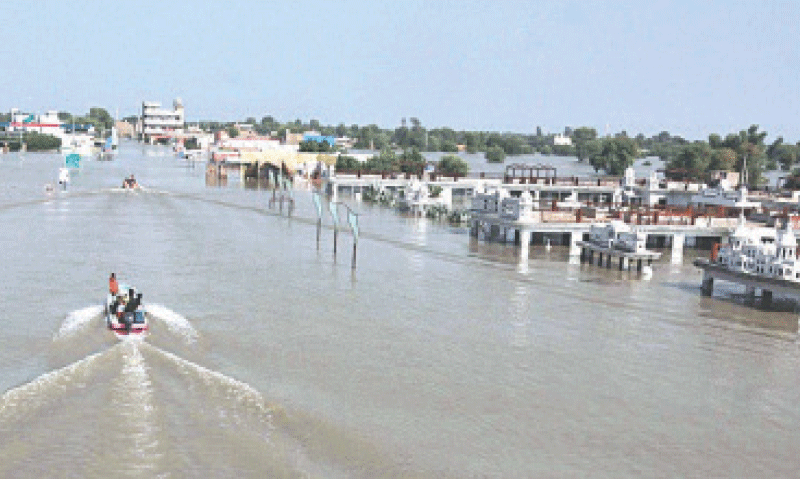• Report found that one-third of global river basins are in “normal” in 2024, but the rest are above or below normal
•The third consecutive year in 2024, there are extensive glacier losses in all regions
Islamabad: Water cycle It has become increasingly unstable and extreme, swinging between floods and droughts, highlighting the cascading effects on the economy and socio-economic and social cascades, according to a new report from the World Meteorological Organization (WMO).
The WMO Global Water Resources Report released on Thursday said that in 2024, only about one-third of global river basins are in “normal” state. The rest are either above normal or below normal for the sixth year of obvious imbalance.
2024 is the third consecutive year, with extensive glacial losses in all regions. Many small glacier areas have reached or are about to pass through the so-called peak water point – glacier melts to reach its maximum annual runoff when it decreases due to glacier contraction.
Ice flow has been increasing in almost all regions since the 1990s, and its acceleration has also accelerated significantly since 2000. This is because the region always shows greater summer melting than accumulated in winter after the 1990s. In 2024, glaciers lost 450 GT or water, equivalent to 1.2mm or their contribution to global average sea level rise.
“Water maintains our society, powers our economy and anchors our ecosystems. However, the world’s water resources are increasing stress and at the same time are having an increasing impact on life and life amid the harms associated with extreme water at the same time.”
According to UN Water, an estimated 3.6 billion people are expected to face at least one month of water by 2050, which is expected to exceed 5 billion, while the global Sustainable Development Goal 6 in water and sanitation is far from meeting.
According to the report, only about one-third of global river catchments have normal discharge conditions over the past six years compared with the 1991-2020 average. This means two-thirds of the water is too much or too little, reflecting an increasingly unstable hydrological cycle.
In 2024, river discharge deviates from normal in approximately 60% of global catchments. Over the past six years, global catchments accounted for only one-third of normal emission conditions compared with the 1991-2020 average.
In 2024, high-profile normal discharge conditions have prevailed in Central and Northern Europe, as well as in Asia, including Kazakhstan and the Russian Federation, and in parts of Asia.
Major basins such as the Danube, Ganges, Godavari and Indus experienced higher than the normal state of aabove. The analysis of groundwater levels included data from a total of 37 and 406 groundwater monitoring stations in 47 countries.
Groundwater levels vary locally due to aquifer heterogeneity and human effects (such as pumping). Nevertheless, a larger regional trend was observed. In 2024, 38% of the groundwater levels in the research station were normal. Committed to have 25% of people or more low normal phenomena, while 37% of normal phenomena are higher than or most.
In 2024, river discharges in about 60% of global catchments normally show deviations. Regarding historical periods, 2024 is characterized by three normal conditions in about 30% of the world, while about 30% of the conditions are normal, while in the other 30% they are above normal. Globally, a smaller basin area is smaller under dry conditions than in 2023, while the basin area has almost doubled compared to normal conditions.
Posted in Dawn on September 19, 2025



